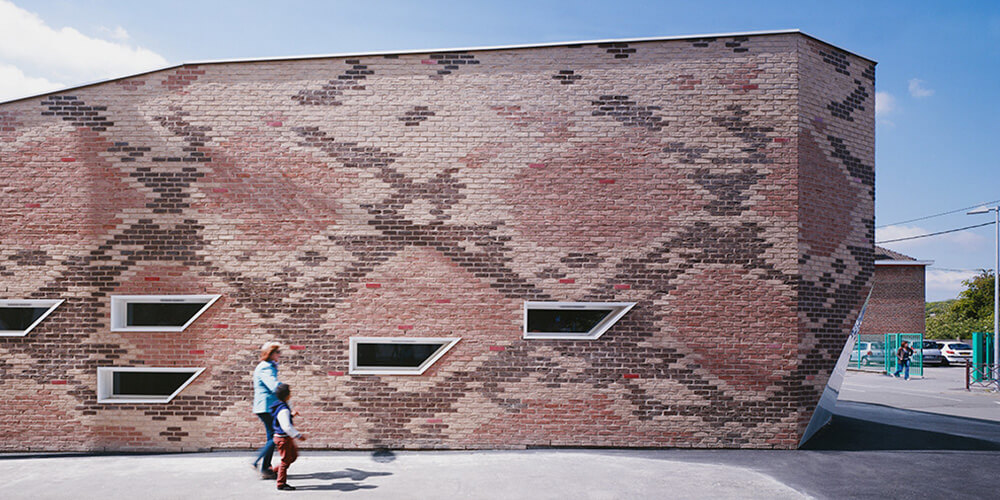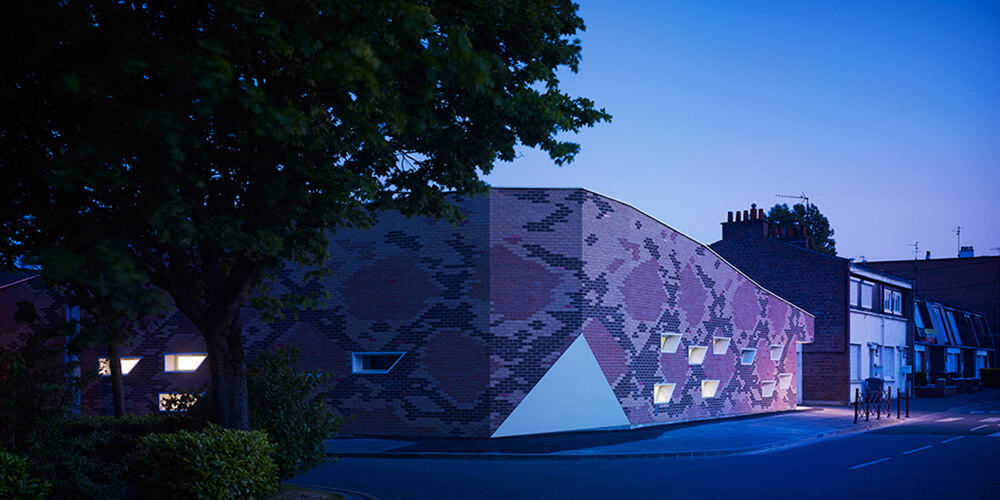Boa Canteen / D’Houndt+Bajart Architects & Associates
Boa Canteen / D’Houndt+Bajart Architects & Associates
Inspirations
“Guy at Nightclub: You look like a clown in that stupid jacket.
Sailor: This is a snakeskin jacket! And for me it’s a symbol of my individuality, and my belief… in personal freedom.
Guy at Nightclub: jerk.
Sailor: C’mere.”
Wild at heart – 1990 – David Lynch
Antoine de Saint-Exupéry : The Little Prince first chapter :
When I was six years old I saw a magnificent picture in a book called True Stories, about the primeval forest. It represented a boa constrictor swallowing a big cat. In the book it said: “Boa constrictors swallow their prey whole, without chewing it. After that, they are not able to move, and they sleep through the six months that they need for digestion”.
Then I pondered deeply over the adventures of the jungle, and after some work with a colored pencil,
I succeeded in making my first drawing. My drawing number One. It looked something like this:
I showed my masterpiece to grown-ups, and asked them whether the drawing frightened them. But they answered: “Frighten? Why should anyone be frightened by a hat?”
Description
A unifying and fun building
The urban challenge was to create a frame edge structuring this corner plot whose boundaries are based on low hosted terraced buildings, at the Marx Dormoy and Léon Blum streets. At the corner, the school restaurant’s parapet ascends gently, creating a bow that hides the restaurant’s technical equipment (central air handling and heat pump) while freeing the ground floor. The architectural treatment is contextual in its urban form and its materiality; the use of the brick, which dominates the landscape, has received a contemporary and qualitative review showcasing the polychrome emblematic brick bonding of the regional architecture. The layout of the masonry, with an almost random pattern, evokes the snake skin and activates the imaginary potential, architecture and young children dream-like: in a world where you have to respect the rules of the urban game, the building delivers a message of imagination, and seems, with its „snake skin” and „scale-like windows” to have the power to move...
Neighbourhood
A landmark in the heart of the neighborhood
Lined with heterogeneous building styles and templates, the Marx Dormoy Street provides a composite environment in a neighborhood built over 30 years, from 1960 to 1980, where housing predominates.
If Léon Blum scholar group, by its floor space, could mark the neighborhood, its location set well back from the street did not allow it, at that time, to play a pivotal role throughout the neighborhood.
Building the school restaurant at the corner of the field, and thus, creating a link between the two schools, kindergarten and elementary, helped move the building to the street, initiating a more complex urban stratification advantageously replacing existing concrete fences.
But it was also about giving people a landmark, an identification point, for structuring the urban landscape by decisive and innovative architectural choices that met the balance of volumes and the specificity of users who are mainly young children.
Facade
A protected and relaxing space
The facades of the restaurant, monolithic and protective, form a boundary, almost an organic membrane, and isolate from the street this place where calm and privacy are needed without locking the user; with its set of windows on two levels, small and big, can, at a glance, kiss the street without being visible from the outside. If the walls form a filter, the inside of the restaurant expands horizontally into two very bright areas open onto an interior garden.
Treatment of the internal and external spaces
The interior landscaping is a vegetable garden structured by deactivated concrete pathways. A green wall of bamboo planted along the main aisle of the garden is a backdrop. At the south side of the garden, a long narrow strip of land welcomes the existing trees on the site that have been replanted giving more depth to the space. The vegetable garden at the heart of the school restaurant is an educational tool, a fun and potentially colorful place, a living place to invest.
In the interior spaces of the catering office, the emphasis is on the visual and acoustic comfort. In the manner of a landscape, the acoustic ceilings are graphic, composed of colored elements consistent with the color shades of the furniture suitable for its users. On the floor, the PVC flooring bathes the room in a soft sage green color and adds to the acoustic comfort of the room. The natural lighting is preferred but the contribution of the required brightness is provided by compact fluorescent equipment incorporated to large translucent boxes with round shapes. The contemporary furniture design suitable for children, and consistent with the overall equipment budget, extends the „natural” atmosphere within a completely round space. The structure of the building gives rhythm to the inner facade. And similar to the branches, the structural columns are divided into three painted metal beams.
General operation
Connections between functional units – flow streams
The created restaurant, attached to the nursery school, allows kindergarten students to directly access it by a transition space consisting of a hall and a toilet block. The catering room is turned inward on a garden lit by large windows oriented to the south and protected by a series of horizontal sun breakers.
The Léon Blum school students’ access requires crossing Marx Dormoy street. The access to the catering room is through a hall and a large dressing made necessary by the outer path. The catering room is acoustically separated from the nursery school while maintaining a privileged view of the vegetable garden. Deeper than the adjacent catering room, it is provided with a glass strip superstructure formed in the niche between the structure and the cover. This shed technique allows avoiding the shadows and diffuses throughout the room a uniform brightness.
The deliveries to the restaurant kitchens are done through Léon Blum place. On this facade, a small outdoor courtyard was constructed, which allows the exit of the garbage cans and the delivery from the street without cluttering the public space.
- The kitchen office occupies in plan a rectangular parallelepiped that develops longitudinally between the catering rooms and the street. This rational and strategic position optimizes deliveries, and the exit of wastes on one hand, and the catering service on the other.
Drawings and plans
Extra info
MISSION:
Construction of a catering office for Paul Bert and Léon Blum scholar group – Marx Dormoy Street – 59160 LOMME
CLIENT:
« Commune associée de Lomme – Lille » (Associate Community of Lomme- Lille)
PROJECT MANAGEMENT:
D’HOUNDT+BAJART Architects & Associates, Architects (Tourcoing)
KHEOPS engineering, BET (Department of Technical Studies / Bureau d’Etudes Techniques) fluids and electricity (Lille)
Beha Legrand, BET (Department of Technical Studies / Bureau d’Etudes Techniques) collective kitchens and hygiene (Lille)
BSE ECONOMIE, Economist (Loos)
CALENDAR:
2012-2014
COST:
1M €HT
SURFACE AREA:
417m2




























